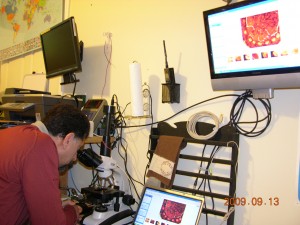 Dry Blood Analysis (DBA) is not a diagnostic or treatment method, rather a screening tool to help assess nutritional needs. During 1920’s the German scientist Dr. Enderlein noticed a correlation between abnormalities in the body and the patterns in the dried blood.
Dry Blood Analysis (DBA) is not a diagnostic or treatment method, rather a screening tool to help assess nutritional needs. During 1920’s the German scientist Dr. Enderlein noticed a correlation between abnormalities in the body and the patterns in the dried blood.
In 1930’s Dr. Bowlen introduced DBA in US. By observing the dried blood of healthy people and people with imbalances and abnormalities, certain blood patterns could be associated with nutritional deficiencies or excesses. Through observation of the blood cell structure, the plasma fluid and other parts of the blood, one’s nutritional status could be assessed. A sound balanced blood should show no yeast, fungus, parasites, molds, damaged cells, bacteria, free radical manifestation, impaired oxygen carrying capabilities, overacidity signs etc., rather it should represent a clean picture.
The Live Blood Analysis (LBA) can show what is happening in the blood at any given time. While DBA pictures would suggest how the body is coping with stress and imbalances the LBA shows what the body is struggling against at the present time. Observing LBA and DBA patterns and structures is a quick way of assessing unhealthy conditions and provide the first warning signals for development of body imbalances. They can also be used for monitoring the efficacy of different treatments and nutritional programs a person is having.
Because during a DBA or LBA the person will be able to watch the blood condition on the screen of a monitor, the process could serve as a good educational and motivational tool towards changing bad eating habits.
